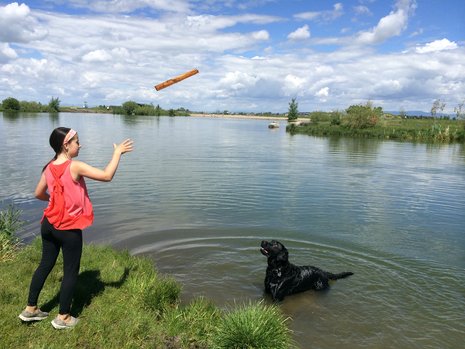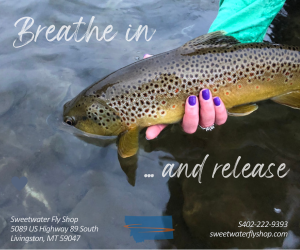Mediocre Athlete Goes for a Run
Scientifically unproven running-enhancement tips.
When I tell people I'm training for the Rut, the remorse in my voice leads them to believe I’m running the 50k,—the course that goes up Lone Peak—but it's actually the 12k baby Rut that's filling my psyche with images of being airlifted off the course. Don’t get me wrong, the 12k version has an unfortunate amount of steep elevation gain and elite runners, and will still be a major fitness challenge.
So how does a slightly subpar athlete prepare? I’ve invented my own running/walking/shuffling regimen, so if anyone regrettably signs up for an intimidating trail race, here’s a step-by-step guide to motivating yourself to get up and plug around the trails.
1) Gear up. Bring your running clothes to work during the week and put them on first thing on weekend mornings. You’re more likely to exercise when already wearing shorts and running shoes as opposed to pajamas. During the week, having gear at work will make it easier to hit the trail straight from the office, rather than going home and falling prey to couch gravity.

Throwing the stick = valid reason for taking a break
2) Bring a dog. If you don’t have a dog, borrow one. Taking a four-legged partner—complete with stick-throwing breaks—adds entertainment and energy. Not everyone has access to a slobbering pile of boundless energy, so if you can’t find a dog, grab an energetic human. If your partner’s having fun, it means you can too. When taking a dog, keep an eye on leash laws, make sure Fido has water, and PLEASE pick up after him. Has anybody smelled the M Trail after the snow melts?
3) Switch up your routine. Even the most pleasant trails get bland after five times in a row. New routes will challenge you in different ways, and you might return to your favorite trail and realize you can run further than last time. Also, it's easy to start taking breaks in specific places—you find yourself walking at that creek crossing whether you were tired or not. New trails, devoid of "That Tree Where I Take a Break", will unglue sticky walking feet.

Bring an energetic running partner. Mine happens to be my dad.
4) That being said, walk if you have to. I used to pressure myself to keep running no matter how lousy I felt. As a result, I never went very far. By giving yourself permission to walk up the hill, throw the stick for the dog, or put your feet in the stream, you’re taking performance pressure off. By extending your run and letting yourself walk, you’ll subconsciously run more as conditioning improves.
5) Set goals, or sign up for a race. Stopping to replenish oxygen is encouraged, but so is seeing improvement. Pushing yourself is necessary for progression, and trail running provides fun landmarks. Instead of screeching to a halt at the hill, try to run the first ten steps. Next time, run to the first big tree. Then to the boulder halfway up. Before you know it, you’ll hit the top without walking. Races also make enticing goals. Setting a deadline can create positive pressure and encourage you to get out there. Pick a race at least a few weeks out (I prefer a few months to ease the pressure) and within a feasible difficulty level.

Congrats, you ran halfway up the hill. Now stop and take a picture.
6) Track progress and be happy. A star on the calendar for every run, tracking mileage, or simply noting that you ran three—instead of two—switchbacks at Leverich Canyon will be a self-esteem boost. Conversely, don’t beat yourself up about a low-energy day, or that you went to Moberry instead of running. Go easy on yourself and be proud of what you’re doing.
Ok. Good luck. Say hello if you see me wheezing on the trail, and let me know if you sign up for the baby Rut. Maybe we can run together.













